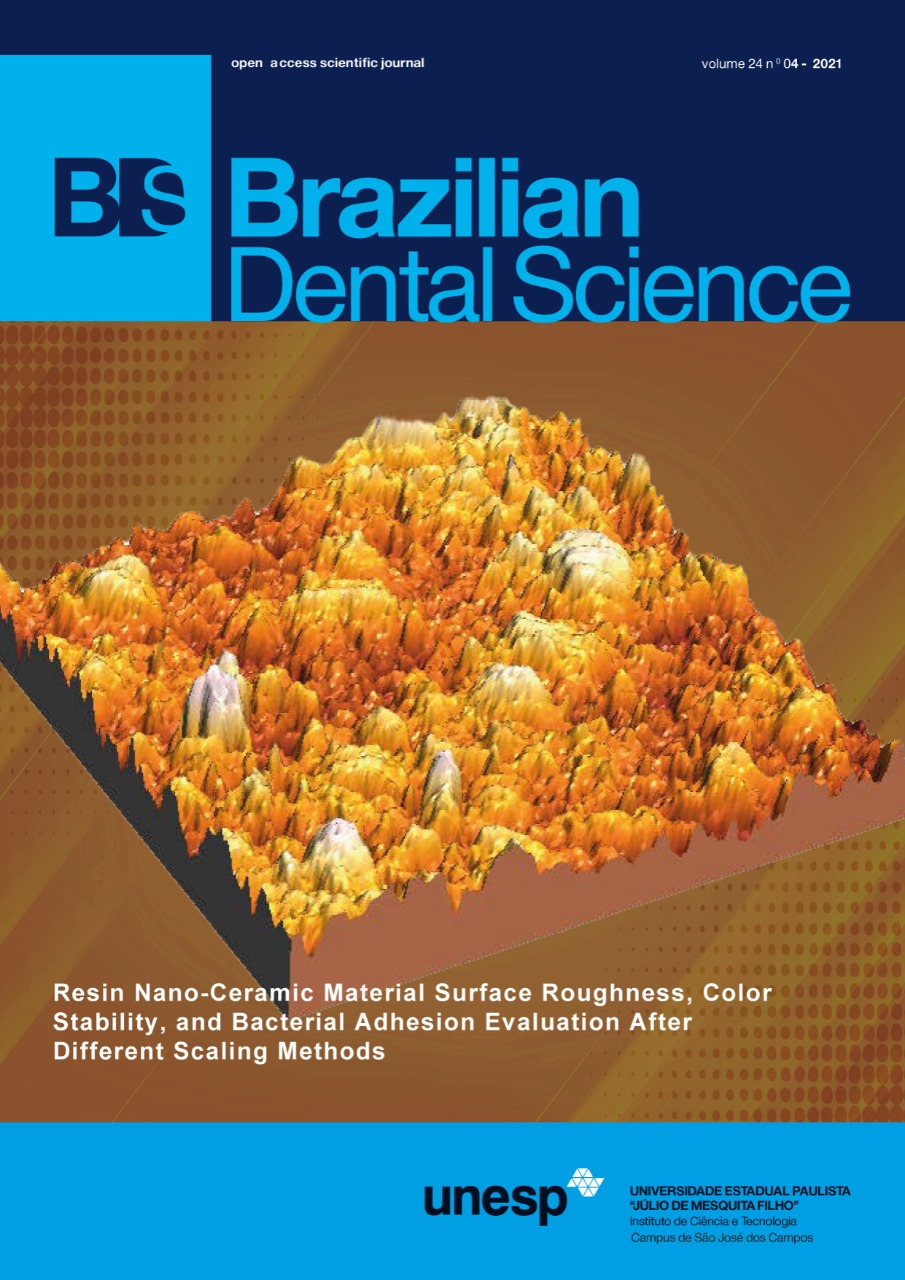In Vitro Evaluation of a Recently Developed Rotary File: AF Rotary
DOI:
https://doi.org/10.14295/bds.2021.v24i4.2558Abstract
Objective: Aim of the present study is to evaluate mechanical properties of a newly developed rotary file, AF Rotary (Fanta Dental, Shanghai, China), and to compare these features with a worldwide spread rotary file, Protaper Gold F2 (PTG F2; Dentsply Maillefer, Ballaigues, Switzerland). Material and Methods: 60 AF Rotary 25.06 and 60 PTG F2 were divided in three groups of 20 files each. A group underwent to cyclic fatigue resistance tests, second group underwent to torsional resistance tests, third group underwent to bending tests. The statistical analysis was performed using t student test with significance level set at 95% (p < 0.05). Results: AF Rotary showed significantly higher torsional resistance and cyclic fatigue resistance (p < 0.05) when compared to the PTG F2. AF Rotary also showed significantly lower bending resistance (p < 0.05) when compared to the PTG F2. Conclusion: Therefore, within the limitations of this study, the results show better performances for AF Rotary compared to PTG F2 regarding the cyclic fatigue test, the torsional test and the bending test. Since the PTG F2 is a commonly used and widely investigated instrument it could be possible to state that the AF Rotary exhibits remarkable in vitro performances.
Keywords
AF Rotary; Protaper gold; NiTi rotary instruments; Cyclic fatigue; Torsional resistance.
Downloads
Downloads
Published
How to Cite
Issue
Section
License
Brazilian Dental Science uses the Creative Commons (CC-BY 4.0) license, thus preserving the integrity of articles in an open access environment. The journal allows the author to retain publishing rights without restrictions.
=================




























